|
Home
Origin
of Name
Coat of Arms
Historical Doc's
& Books
Births 1600
Births 1800
Births 1864
Births 1900
Marriages 1600
Marriages 1800
Marriages 1845
Marriages 1900
Deaths 1600
Deaths 1864
Deaths 1900
Graves
Family Trees
Family Links
Census Records
Directories/Wills
Military Service
Passenger Lists
Land Records
Parishes & Townlands
New Pages &
File Updates
Contact Information
|
|
Historical Documents
|
|
Grant to Helen Bradshaw, 30
September 1449 a.d.
(Tuesday after Michaelmas 28 Henry
VI)
________________________________
Mediaeval Latin
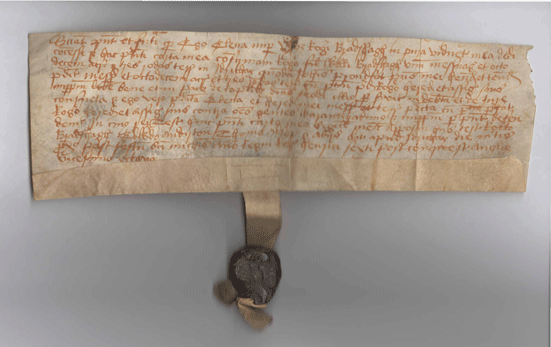 |
|
Helen, widow, formerly wife of Roger Bradshagh, to Roger
son of William Bradshagh
One messuage
and 18 acres 3 rods in Iridgehay (Idrichay),
formerly belonging to her Father, John Proudfot
W(itnesses); Robert Bradshagh, Edward Andirton,
Thomas Alsop, at Iridgehay
|
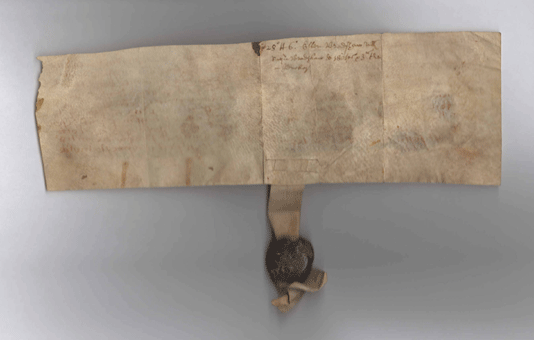 |
|
28 H 6th (1449 AD) - Helen
Bradshaw
|
From the Collection of Richard Lee Bradshaw
|
|
Warrant of Attorney; 21 May 1492
a.d.
(Monday after the Feast of St.
Dunstan, 7 Henry VII)
|
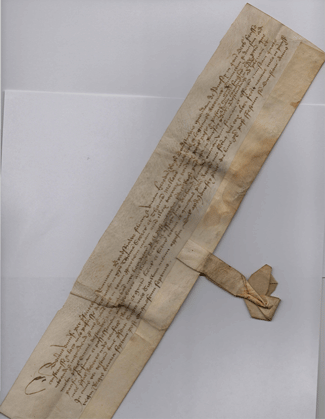 |
|
Emma Bradshawe, daughter and one of the heirs of Roger
Bradshawe,
formerly of Iridgehay (Idursey), Derbyshire,
appointing Thomas Storer
and Thomas Mellour, attornies to take and deliver seisen
to Robert Mellour
her share in lands, tenements, meadow and pasture in
Iridgehay which
descended to Emma after the death of Roger
|
|
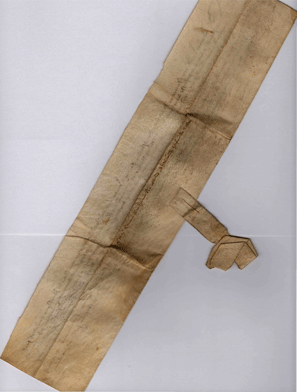 |
From the Collection of Richard Lee Bradshaw
|
|
A
Scheme to prevent the Running of Irish Wools to France - 1754
|
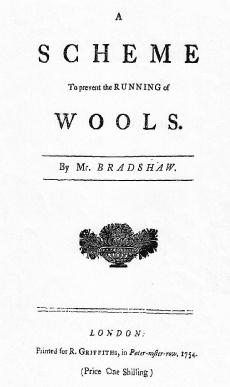 |
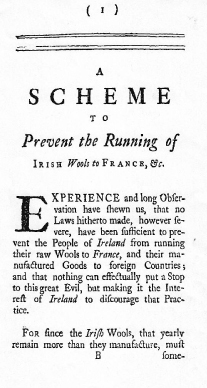 |
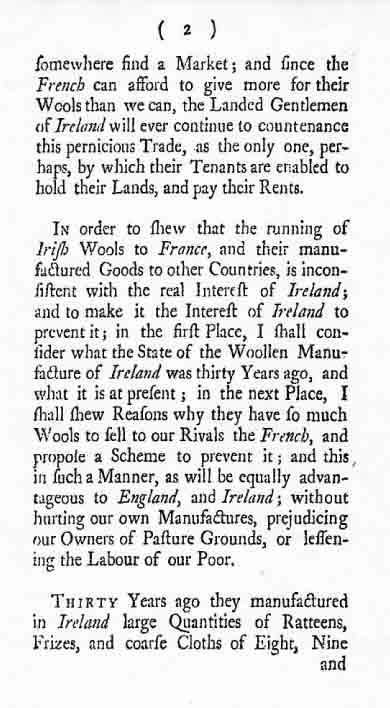 |
|
A
SCHEME
to
Prevent the Running of
Irish Wools to France, & c.
by Mr (James) Bradshaw
London |
Experience
and long observation have shewn
us, that no Laws hitherto
made, however severe, have been
sufficient to prevent the People of
Ireland form running their raw
wool to France, and their
manufactured Goods to foreign
countries; and that nothing can
effectively put a stop to this great Evil,
but making it the Interest of
Ireland to discourage that
Practice.
For since the
Irish Wools, that yearly remain
more than they manufacture,
must somewhere find a
Market; and since the French can
afford to give more for their
Wools than we can, the Landed
Gentlemen of Ireland will ever continue
to countenance this pernicious
Trade, as the only one, perhaps, by
which their Tenants are enabled
to hold their Lands, and pay their
Rents.
|
In order to
shew that the running of Irish Wool
to France, and their manufactured
Goods to other Countries, is
inconsistent with the real Interest
of Ireland; and to make it the
real Interest of Ireland to prevent
it; in the first Place, I shall
consider what the State of the Woollen
Manufacture of Ireland was thirty
Years ago, and what it is at present;
in the next Place, I shall shew Reasons
why they have so much Wool to
sell to our Rivals the French, and
purpose a Scheme to prevent it;
and this in such a Manner, as
will be equally advantageous
to England and Ireland;
without hurting our own
manufacturers, prejudicing our Owners of
Pasture Grounds, or lessening the
Labour of our Poor.
Thirty Years
ago they manufactured
in Ireland large Quantities of Rattens, Frizes, and coarse Cloths
of Eight, Nine and....
|
|
|
Observations of The Linen Board - 1763 (Ireland)
Reference
the above "Observations
of The Linen Trade" by
the Linen Weavers and Manufacturers of the Towns of Belfast, Lisburn,
Hillsborough and Country adjacent.
(Reference - Goldsmith's
Library, University of London)
On 28th June
1763, Thomas
Bradshaw
& Roger Borrows Deputed for the Town of Hillsborough at the meeting of
Linen Weavers and Manufactures for the Towns of Belfast, Lisburn,
Hillsborough and Country adjacent. No manufacturer would be
admitted who was not also a weaver. The meeting of six
Deputies addressed two specific issues which caused great hardship to weavers
- Damnified Flax-seed coming from Scotland and pending legislation
to prevent steeping flax in running water.
|
| Samuel Bradshaw's
appointment as Solicitor managing The King's Rent in Ireland -
Dublin 1795
|
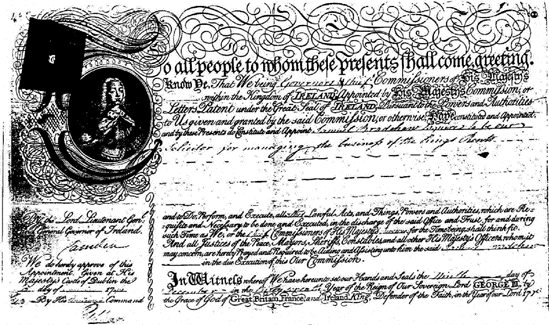 |
|
To all people to whome these presents shall come,
Greeting.
Know ye, That We being Governors in Chief Commissioners
of HIS Majesty’s, Domains within the Kingdom of
IRELAND, Pursuant to
the Powers and Authorities To Us given and granted by
the said Commission, or otherwise, Have constituted and
appointed And by
these Presents do Constitute and Appoint Samuel Bradshaw
Esquire to be our Solicitor for managing the business of
the Kings Rents,
------ ------ ------
----------------
And to Do, Perform, and Execute, all their Lawful Acts,
and Things, Powers and Authorities, which are Requisite
and Necessary to be
done and Executed, in the discharge of the said Office
and Trust, for and During such Time as We, or the Chief
Commissioners of His
Majesty’s Revenue, for the time being, shall Think fit.
And all Justices of the Peace, Mayors, Sheriffs,
Constables, and all other His
Majesty’s Officers Whome it may concern, are hereby
Prayed and Required to be Aiding and Assisting unto him
the said Samuel
Bradshaw in the due Execution of this Our Commission.
IN WITNESS
whereof We have hereunto set our Hands and Seals this
ninth day of December in the thirty Seventh Year of the
Reign
of our Sovereign Lord GEORGE lll , by the Grace of God of
Great Britain, France, And Ireland, Kind, defender of
the faith , in the Year
of our Lord 1796.
Signatures follow.
The Approval at the Left side, under the portrait. -:
By the Lord Lieutenant Gen’l ; And General Governor of
Ireland
Signed.
We do hereby approve of this Appointment. Given at
His Majesty’s Castle of Dublin the
13th day of December 1796.
By His
Excellency's Command
Signed.
|
Document courtesy of Kenneth
Bradshaw, a descendant of Samuel Bradshaw
|
|
Alan R.Bradshaw's report of the German Naval Surrender in
1918
|
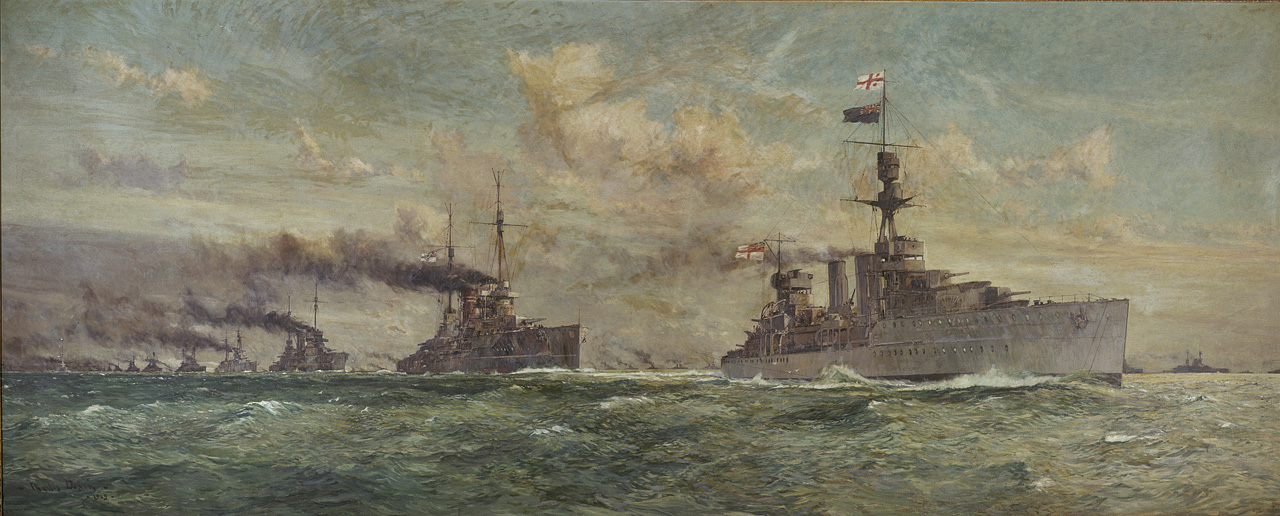
HMS Cardiff leading the German High Seas Fleet to
surrender in the Firth of Forth,
by Charles Edward Dixon
(National Maritine Museum, Greenwich)
|
|
THE SURRENDER OF THE GERMAN HIGH SEA FLEET
21st November 1918
"When are they coming
over?" Will they really come?" Every officer and man was
asking himself these questions as soon as the
"KONIGSBERG" had left Rosyth carrying with her Admiral
von Meurer and the other German delegates who had been
in consultation with Sir David Beatty, the
Commander-in-Chief of the British Fleet.
We had not long to wait
before we knew the answer to our queries.
Signals from German Wireless Stations to Rosyth
and from the British Commander-in-Chief to the Germans
were intercepted and at about 4.30 P.M. on the 20th
November, 1918, the orders arrived for Operation 'Z Z' -
a very appropriate title for what should be the very
last operation in the Great War.
We - the First Light Cruiser Squadron were to
leave harbour early in the morning of the 21st so as to
be in a rendezvous by 8.0.A.M. when we should meet the
German ships which were to be handed over to us in
accordance with the terms of the Armistice.
Three
light cruisers were chosen to leave harbor before the
remainder of the Grand Fleet in order to meet the enemy
and lead him to harbour; the three ships H.M.S.
"CARDIFF" (flying the flag of Rear Admiral
Alexander—Sinclair, our late Admiral),
H.M.S. "PHAETON" and H.M.S. "CASTOR" flew huge
blue ensigns at the foremast so that the enemy could
distinguish them easily and take station astern.
At
2.15 A.M. in the morning of 21st we got under way and by
2.40 A.M. had passed Black Gate closely followed by the
remainder of the Grand Fleet spread in two lines and
advancing at 10 knots.
We had to turn 16 points at about 8.A.M.and then
again some time later as we were somewhat before our
time.
The
Twenty-first ("DER TAG") dawned on our Mighty Armada,
cold and bleak with a slight mist hanging over the
dreary expanse of North Sea which had been our Hunting
Ground for the past four years during which time we had
but a few chances of trying conclusions with enemy
warships.
Though fairly calm for the North Sea, there was
sufficient chop on the water and the sun - trying to
break through - made a picture which will ever remain
imprinted on the memories of those who had the good luck
to be there.
As the time wore
on we began to wonder whether the Germans were going to
come after all and keep the agreement made between Sir
David Beatty and Admiral von Meurer. We were not kept
long in doubt as our advanced destroyers soon reported
that 15 enemy heavy ships were steering towards the
appointed rendezvous.
We had early breakfast and at 8.15. A.M. all
hands went to Action Stations as we were not going to
trust ourselves to an enemy who had shown himself to be
such a treacherous foe during the last 4 years.
All our guns were tested by firing tubes and
projectiles were placed in readiness so that fire could
be opened at the first sign of treachery on the part of
the enemy ships.
At
about 8.30 A.M. a Kite Balloon was sighted on the
Starboard bow and soon H.M.S."CARDIFF" (who was towing
the balloon) came in view, distant some 5 or 6 miles
Astern of her with white flags flying and smoke
pouring out of their funnels came the pride of the
German High Sea Fleet - their Battle Cruisers the
"SEVDLITZ" flying the broad pennant of Commodore Tagert,
the "MOLTKE" the "DERFFLINGER" the "HINDENBERG" and the
"VON DER TAN". Their guns were trained in the securing
position fore and aft and no man could be seen on deck.
The ships themselves presented a magnificent sight with
their powerful lines and huge funnels from which issued
volumes of smoke as their stokers exerted themselves to
reach the Firth of Forth for their first view of Great
Britain.
Astern of the
Battle Cruisers came the enemy Battleships - the
"FRIEDRICH DER GROSSE" flying the flag of Rear Admiral
von Router (The Admiral in command of the whole force),
the "KONIG
ALBERT", the
"KAISERIN", the PRINZREGENT LUITPOLD" the "KAISER" the
"BAYERN" the "GROSSER KURFURST",
the "KRONPRINZ
WILHELM" and the "MARKGRAF".
About 3 miles
astern of the Battle Ships came the enemy light cruisers
led by H.M.S. "PHAETON" in the following order;
the "KARLSRUHE"
flying the broad pennant of Commodore Harder, the
"FRANKFURT" the "NURNBERG" the "EMDEN" the "COLN" the
"DRUMMER" and the “BURMMER” and the "BREMSE".
50 of their
latest and finest destroyers brought up the rear led in
by H.M.S. "CASTOR" and preceded by a line of British
destroyers in single line abreast and further escorted
by two lines of our destroyers on either side of them.
Our guns
meanwhile though, to every appearance 'dead' and trained
fore and aft were very much 'alive'; all the guns' crews
were closed up and the correct range and deflection of
the enemy ships were kept set on the sights so that it
only required a few seconds to train the guns round and
open fire should the enemy dare make a last desperate
effort.
Surrounded on
every side by British, American and French Men-of-War,
the German Ships sailed up the Forth through the Grand
Fleet which was divided up into two lines, that to the
North being composed of ships from the following
squadrons (commencing from the East): - The 1st & 6th
Light Cruiser Squadrons, 1st Cruiser Squadron, 5th 6th
and 2nd Battle Squadrons, H.M.S."QUEEN ELIZABETH"
(Flagship of the Commander-in-Chief, Grand Fleet) 1st
Battle Cruiser Squadron and H.M.S. "LION" (Flagship of
the Battle Cruiser Force) and the 4th Light Cruiser
Squadron. The
line to the South was composed of Ships from the
following squadrons (commencing from the East):- 3rd &
2nd Light Cruiser Squadrons, H.M. ships "MINOTAUR",
"VINDICTIVE", "FURIOUS", 4th &
1st Battle Squadrons, 2nd Battle Cruiser Squadron and
the 7th Light Cruiser Squadron. In addition to these
ships the Connecting Ships (Used for signalling
purposes) "KING ORRY", "BLANCHE", "BOADICEA",
"FEARLESS", "BLONDE" and the French Man-of-War the
"AMIRAL AUBE" with attendant destroyers and a large
number of British Destroyers from the 3rd, 11th, 12th,
13th, 14th, 15th,, 20th,, and 21st Flotillas so that
very little chance was offered them should any dare to
make an attempt to escape.
As we shaped our
course up the Forth the German destroyers en masse were
on our Port Beam but we drew ahead until the enemy
cruisers were abreast of us.
As was natural
such a large force of ships took some time to pass
through the narrow entrances to the Forth so that we had
constantly to ease down so as not to overlap the many
squadrons ahead of us. About 3.0.P.M. we sighted May
Island on our Starboard Bow and the German Ships forged
ahead. Towards
4.0 P.M. when about 3 miles East of Inchkeith we came
across the German Ships who had by this time anchored
surrounded by one of our Light Cruiser Squadrons and the
1st Battle Squadron comprised of some of our most
powerful ships.. They are still there as I am writing
this little account of their surrender and a more
humiliating day for Germany than the 21st November,
1918, will be hard to discover.
Alan R. Bradshaw
H.M.S. “GALATEA".
21st November
1918
(Original document at the Imperial War Museum)
|
Genealogy Books relating
to Bradshaw Families
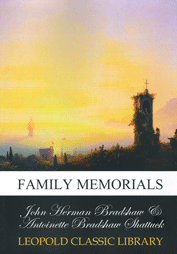
by Antoinette
Bradshaw Shattuck & John Herman Bradshaw
Rollins
Publishing Company, Chicago
1890
In
1740, John Bradshaw and his wife Mary Wool, emigrated from Co.
Antrim to New Jersey
Memorial to Captain James Bradshaw,
UEL,
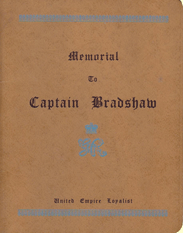
Manley
Ostrander and Charles G. Crouse.
1942
James Bradshaw, son of William Bradshaw & Mary Niblock, was
baptised October 20th, 1723 in Seagoe Parish Church,
County Armagh. Between October 1726 & 1728, the family immigrated to America and settled in New Milford, Connecticut, New England.
Sir
Roger Bradshaigh
of Haigh, knight and Baronet
1628-1684
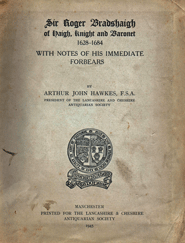
Arthur John Hawkes, F.S.A.
1945
Turton Local Historical Society
 |
 |
by James J
Francis
1977 |
by
James J Francis
2012 |
The Bradshaw Family of
the Bay of Quinte
1784-1984
Loyalist Bradshaw Family
Association
Gordon
Crouse, Sam Hart & Hessie Giles
DW Friesen Publisher
Altona, Manitoba, Canada
1984
Evelyn M.
Wright,
Generation
Press, Ontario, Canada
1985
George Fagan Bradshaw
Submariner and Marine
Artist
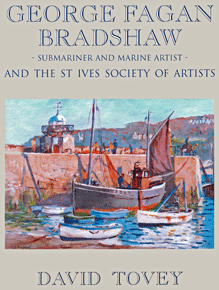
David Tovey
2000
GOD'S
BATTLEAXE
The Life
of Lord
President
John Bradshawe
1602-1659
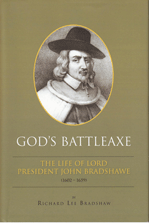
Richard
Lee Bradshaw
2010
Thomas
Bradshaw 1733-1774
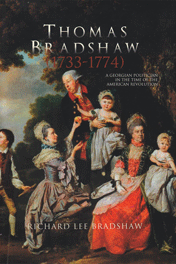
Richard
Lee Bradshaw
2011
The Judge's
Cat
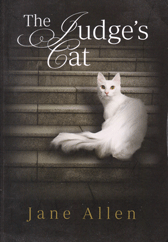
Jane Allen
2015
|
|
This information is freely available to genealogists and family historians, but
must not be used on a pay site or sold for profit.
|

|